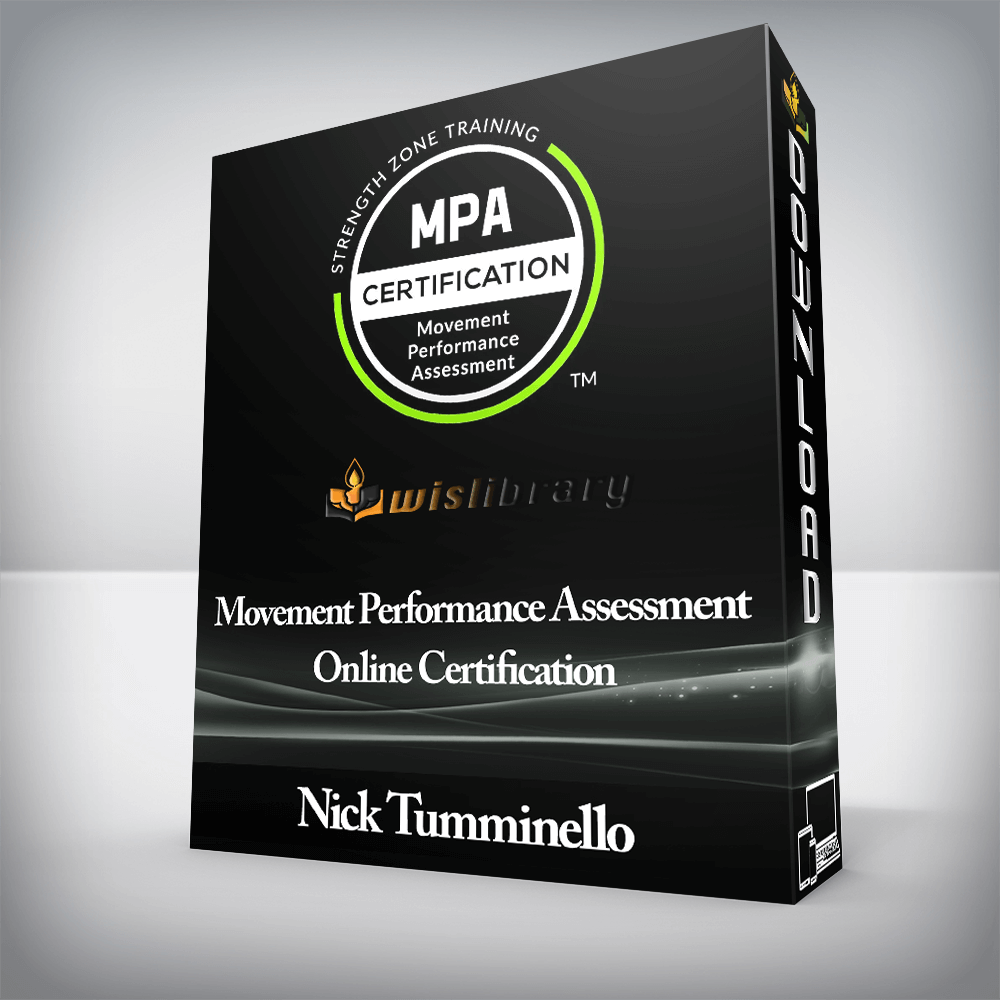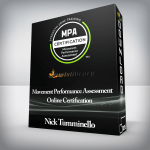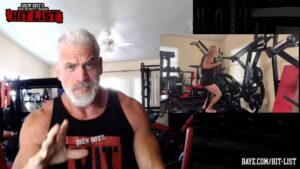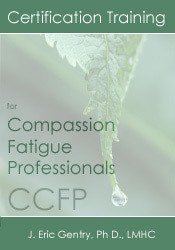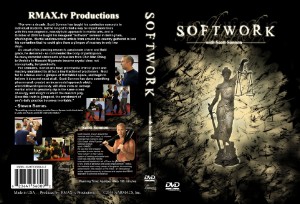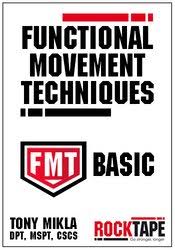Nick Tumminello – Movement Performance Assessment Online CertificationGet Your Clients Training Safely, Quickly, And Effectively With The Only Assessment Designed Specifically For Personal TrainersAre you a personal trainer that’s learned all the movement assessments out there but feel like none of them work well for your clients?Do you struggle to know exactly which exercises are best for your new clients to get them started safely and without pain?Have you been looking for the perfect way to create client programs that improve their movement and get results without spending half the workout doing corrective exercises or warm-up drills?If so, it’s not your fault and help is on the way.The initial assessment is one of the most important factors when starting a new client or re-starting an old one. It sets the tone for your working relationship, reveals any pain or movement inabilities, and tells you exactly which exercises should make up the client’s first program.But there’s one big problem, most assessments out there right now don’t do a good job accomplishing all 3 of these outcomes. They fall short on at least one of the three and fail to serve trainers in a way that makes their job easier, not harder.Some get you hunting for all the things that are “wrong†with a client and encourage you to fix these with rehab exercises before training them hard, but this leaves clients bored and paranoid about being “broken.â€Others might focus on identifying what exercises or movements clients can do but offer no clear direction on exactly which variation is best for their abilities or body type. You’ll have a place to start, but it won’t always be the best one.While we’ve come a long way in creating assessments to identify how clients move, we’ve yet to design one for trainers that’s simple to perform, quick to understand, and easy to use for designing initial client programs. At least until now.If you’re tired of piecing together multiple assessments, using too many drills and exercises to fix deficiencies, or not knowing exactly which exercises to use with clients right from the get-go, then the Movement Performance Assessment is designed specifically for you.The Movement Performance Assessment Includes:7 Movement Tests That Resemble Actual ExerciseSimple And Fast Testing ProceduresImmediate Feedback On Ideal Exercises For Clients16 Hours Of Continuing Education Credits The Movement Performance Assessment Will Teach You How To:Choose which exercises are right (and wrong) for each personDetermine the best lifting movements to use as a starting pointFind a safer and more individualized training directionFix faulty movements with a smarter movement prescription systemAssess on the fly in one-on-one or group settings12 Practical and Comprehensive Learning ModulesModule #1 – MPA Essentials1.1 Assessments vs. Screens: Do we have it backwards?1.2 It’s not about getting more data. It’s about getting more relevant data.1.3 What should we be looking for, really?1.4 If you’re assessing these things, you’re still guessing1.5 How to assess the movements that matter.1.6 The Hierarchy of exercise1.7 How trainers lose their way with assessments1.8 Try this before corrective exercises… because it takes care of most movement deficiencies better and faster.Module #2 – MPA Rules2.1 Your clients aren’t broken!2.2 Fitting exercises to clients, not fitting clients to exercises2.3 Assessing unloaded and loaded movement2.4 How to assess your client while giving them a great first session2.5 What to (not) tell your client about and during the assessment2.6 Every movement assessment has a reason you and your client understand.2.7 Awareness vs. Ability2.8 Pain vs. Performance2.9 The missing exercises for pain2.10 M.O.S.T Exercises: Mobility + Strength and Stability2.10 The Mandatory Movement AssessmentsModule #3 – Squat Assessment3.1 Should we assess the Overhead Squat?3.2 The fastest way to find their deepest squat3.3 Why floor hip mobility assessments fail3.4 Hip over-coverage vs. Under-coverage: The research on hip anatomy, mobility and pain.3.5 What about butt wink?3.6 Loaded assessment3.7 How to quickly find their optimal loaded squat depth3.8 How (Not) to Go Heavy: Quickly know the best high-load squat variation for them3.9 Should the squat be a main movement?3.10 Knee Pain: The instant movement fixes for zero pain.3.11 Back Pain: The instant movement fixes for zero pain.3.12 Hip Pain: The instant movement fixes for zero pain.3.13: Heal Raised Squats: Good or Bad?3.14 M.O.S.T Exercises for Ankle MobilityModule #4 – Split-Squat Assessment4.1 Unloaded assessment4.2 The fastest fix for knee alignment.4.3 The missing assessment for optimal tibia position and foot turnout4.4 What to do if it’s easy for them4.5 What to do if it’s difficult for them4.6. Loaded Assessment4.7 If they have knee pain, this will immediately make them pain-free.4.8 If they have Hip pain, do this for zero pain.4.9 The problem with the Bulgarian Split Squat4.10 A more functional assessment of hip flexor tightness4.11 M.O.S.T. Exercises for Tight Hip FlexorsModule #5 – RDL Assessment5.1 Unloaded assessment5.2 The fastest form fix5.3 The problem with holding a dowel on their spine5.4 How to quickly find their optimal depth for spinal health.5.5 The common hip hinging mistake that can cause back overuse.5.6 When NOT to do hip hinging, and what to do instead.5.7 Loaded assessment5.8 Do this to eliminate back pain from hip hinging fast5.9 Research shows this part of the hamstrings gets tight, and the simple prevention strategy.Module #6 – Row Assessment6.1 Loaded assessment6.2 The best coaching cue to improve their alignment immediately!6.3 How the row can help improve the hip hinge.6.4 What to do if they’re still not able to maintain proper positioning6.5 How to quickly and easily teach proper scapular movement for the clients who just can’t seem to get it.6.6 M.O.S.T exercises for rounded shouldersModule #7 – Plank Assessment7.1 Straight-arm or bent arm plank?7.2 Advanced plank assessment7.3 What does it mean for programming if they can achieve a good plank position?7.4 What does it mean for programming if they can’t achieve good spinal alignment even with coaching.7.5 The best (and worst) core exercises for people with a large lordodic curve.7.6 What the research really says about pelvic tilt, core strength and back pain.7.7 Should you actively contract your abs while doing a plank?7.8 How to immediately use this for your “Workout of the day†and in Group Training.Module #8 – Overhead Press Assessment8.1 Unloaded Assessment8.2 Loaded Assessment8.3 The safest way to press overhead8.4 Do this to eliminate shoulder pain8.5 This exercise is more joint friendly than landmine presses8.6 What the research really says about scapula position, posture and pain.8.7 M.O.S.T exercises for improving overhead shoulder mobility fasterModule #9 – Dumbbell Bench Press Assessment9.1 The problem with assessing the Push-up9.2 Unloaded Assessment9.3 Loaded Assessment9.4 What the best depth?9.5 What does it mean when barbell bench press hurts their shoulders, but dumbbells and push-ups don’t?9.6 If the barbell, dumbbells and push-ups hurt their shoulders, this will get them pressing without pain immediately.9.7 Why floor presses suck, and how to make them great.9.8 Should you avoid pushing exercises if they have rounded shoulders?Module #10 – Mobility Assessments10.1 How to easily individualize your mobility warm-ups, even with group training.10.2 Test, Retests that get instant improvements in range of motion (and wow your clients).10.3 Thoracic Spine Mobility: Test, Retest10.4 Shoulder Mobility: Test, Retest10.5 How hip anatomy should change your hip mobility drills10.6 These quick, research-based tests will show you who mobility work is a waste of time for.Module #11 – Rotational Assessments for Athletic Performance11.1 The problem with anti-rotation training11.2 The two movement prerequisites for optimal rotational power in sports11.3 The two mandatory Rotational movement assessments11.4 The missing exercises for improved rotational power and spine health11.5 The misunderstood research on lumbar spine rotation, spinal mechanics and back health.Module #12 – Using the MPA Results In Your Programs12.1 Using your MPA results is simple, easy and fast.12.2 How to use your MPA results for in-person and Online Personal Training.12.3 How to use your MPA for your Workout of the Day and Group Training.12.4 Joint friendly exercise database for long-term programming.If you’re tired of struggling to identify the best exercises for your clients right away or finding ways to deliver results without defaulting to corrective exercises, then the Movement Performance Assessment is perfect for you.Upon completion of this course, you’ll know how to quickly understand each client’s unique needs and be able to create workouts that improve movement while avoiding exercises that they hate or cause pain.For a fraction of the standard cost of most specialty certifications, you’ll learn how to assess any personal training client in any setting quickly and easily. We know that most trainers will recognize the immense value of this service and enroll right away. It’s not everyday that you get a chance to have one of the best fitness professionals in the world be your coach.There are no reviews yet.Add a Review Cancel replyYou must be logged in to post a review.
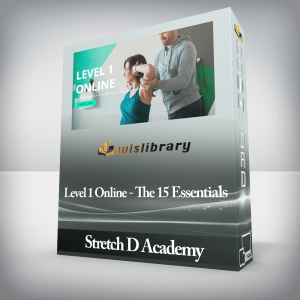 Stretch D Academy – Level 1 Online – The 15 Essentials
₹16,102.00
Stretch D Academy – Level 1 Online – The 15 Essentials
₹16,102.00
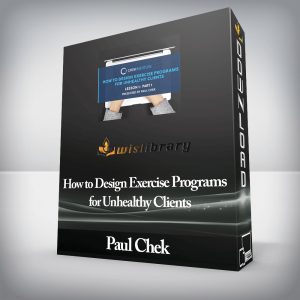 Paul Chek – How to Design Exercise Programs for Unhealthy Clients
₹14,774.00
Paul Chek – How to Design Exercise Programs for Unhealthy Clients
₹14,774.00
Nick Tumminello – Movement Performance Assessment Online Certification
₹31,042.00

